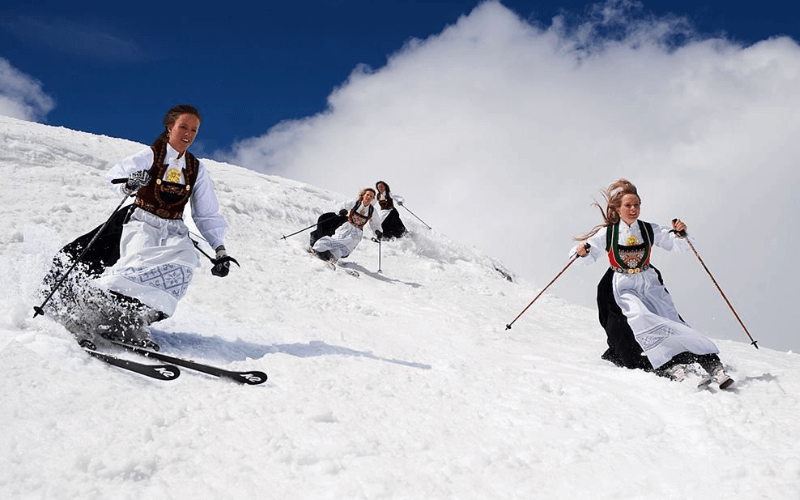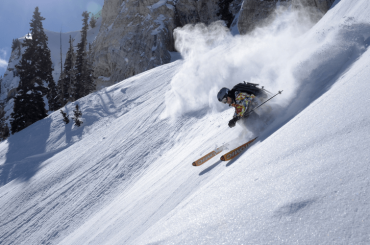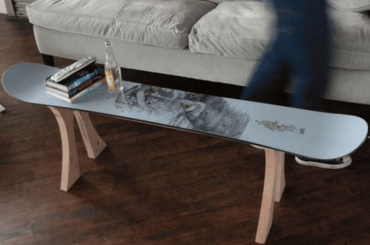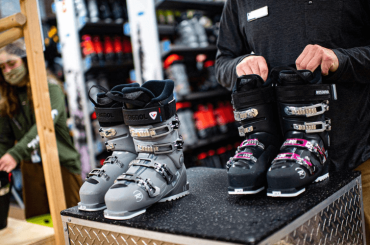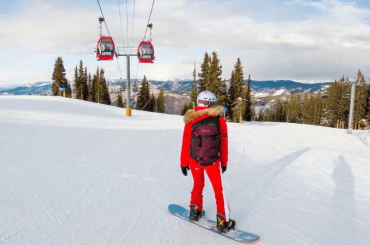Skiing without goggles can be a scary experience. The sun in your eyes, the snowflakes filling your eyelashes and the wind whipping through your hair can all make for a frustrating and dangerous experience.
However, with a little bit of preparation, skiing without goggles can be an enjoyable and safe experience. In this post, we will provide some tips on how to ski without goggles safely and enjoyably.
Can you ski without goggles?
YES! That’s a little more complicated to answer. There are a few things to consider before ditching Google:
1) Type of terrain you’ll be skiing
If you’re sticking to mellow groomers, you’ll probably be just fine without goggles. If you’re venturing off into the trees or hitting the moguls, you might want to consider keeping them on.
2) Weather conditions
Again, if it’s a bright and sunny day, you’ll probably be okay without goggles. If it’s windy, snowy, or cloudy, you might want to keep them on.
3) Your eyesight
If you wear glasses or contact lenses, you’ll want to keep the goggles on. The last thing you want is for your glasses to fog up or for your contacts to get dried out from the wind.
So, there are a few things to consider before ditching the goggles. But if you’ve decided that you want to ski without them, here are a few tips:
- Wear sunglasses: You need to protect your eyes from the sun and the snow. Ensure your sunglasses fit well so they don’t fall off when skiing.
- Wear a hat: A hat will help keep the sun and snow out of your eyes. It will also keep your head warm.
- Keep your face covered: A scarf or bandana can help keep the wind from drying out your skin.
- Blink often: This will help keep the snow out of your eyes.
Follow these tips and you’ll be able to ski without goggles safely and enjoyably!
Benefits of wearing goggles while skiing
There are many benefits to wearing goggles while skiing.
- They protect your eyes from the sun, wind, and cold.
- They help you see better in low-light conditions and powdery snow.
- They can help prevent frostbite.
- They can help you look stylish while skiing.
- They can help you stay safe while skiing.
What are dangers of skiing without goggles?
The dangers of skiing without goggles are threefold.
- First, the sun can be incredibly bright and glaring especially when the snow is fresh and powdery. This can lead to temporary blindness and make it difficult to see obstacles in your path.
- Second, the wind can cause irritation and drying of the eyes, which can lead to watering and blurred vision.
Finally, cold temperatures can cause frostbite, which can lead to permanent damage to the eyes.
How to choose the proper goggles for your needs?
There are a few things to consider when choosing the proper goggles for your needs.
- First, you need to decide what type of skiing you will be doing. If you are going to be skiing in powdery snow, then you will need goggles that have a large field of view so that you can see obstacles in your path. If you are going to be skiing in icy conditions, then you will need goggles that have an anti-fog coating so that your vision is not obscured.
- Second, you need to consider the size of your head. Goggles come in a variety of sizes, so it is important to choose a pair that fits snugly but is not too tight.
- Third, you need to decide what color of lens you want. A darker lens will be better for bright conditions, while a lighter lens will be better for low-light conditions.
- Fourth, you should also consider the style of the goggles. Do you want a frameless pair that will give you an unobstructed view? Or do you want a pair with a frame that will provide more protection from the elements?
- Fifth, you need to decide how much you are willing to spend on a pair of goggles. Goggles can range in price from around $20 to $200.
How to properly care for your ski goggles?
- To properly care for your ski goggles, you should clean them after each use. Use a soft cloth to wipe away any dirt or debris. You can also use a mild soap if needed. Be sure to rinse the lenses thoroughly and dry them with a soft cloth.
- You should also store your goggles in a safe place when not in use. A soft case is ideal. This will help prevent the lenses from getting scratched.
- Finally, you should inspect your goggles regularly for any damage. If you notice any cracks in the lenses or frames, replace them immediately.
FAQs – Skiing Without Goggles
Can you ski with glasses instead of goggles?
Yes, you can ski with glasses instead of goggles. However, it is important to choose the right type of glasses. They should fit snugly and have lenses treated with an anti-fog coating.
Do I need goggles for night skiing?
There is no definitive answer to this question, as it depends on personal preferences and ski conditions. Some skiers find that they don’t need goggles for night skiing, while others find them essential.
Ultimately, it’s up to the individual skier to decide whether or not to wear goggles during night skiing. However, it’s important to be aware that skiing at night can present some unique challenges, so it’s always a good idea to be prepared.
Can you wear normal sunglasses for skiing?
Yes, you can wear normal sunglasses for skiing, but they might not provide as much protection as specialized ski goggles. Sunglasses can help reduce glare and protect your eyes from the sun’s ultraviolet (UV) rays, but they don’t do much to prevent wind or cold air from getting in.
Ski goggles enclose your eyes and seal out the elements, so they’re a better choice if you’re looking for maximum protection.
Do I need a helmet to ski?
Most ski resorts require skiers and snowboarders to wear helmets, so it is recommended that you wear one. Wearing a helmet can help prevent head injuries in the event of a fall. If you do not own a helmet, most resorts will have rental helmets available.
Conclusion
Ski goggles play an important role in keeping your eyes safe while skiing. They protect your eyes from the sun, wind and other elements while you are on the slopes.
Goggles also help to improve your visibility so that you can see obstacles and other skiers more clearly. If you are planning a ski trip this winter, make sure to pack a pair of ski goggles to ensure a safe and enjoyable experience.

